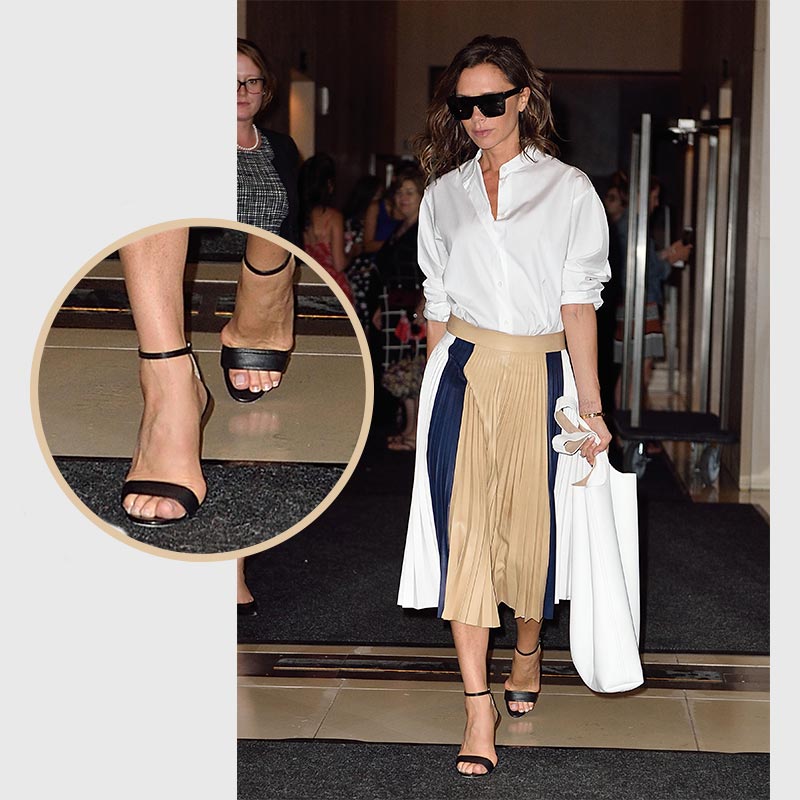Victoria Beckham, along with many celebrities from supermodel Naomi Campbell to royalty like Megan Markle and Kate Middleton – Duchess of Cambridge all wear ostentatious heels and wear them religiously. So it is hardly surprising that, as a consequence, they have bunions visibly poking out from their Louboutins!
A bunion is a bony deformity of the joint at the base of the big toe. The medical name is hallux valgus. This can also appear on the 5th metatarsal (little toe) and called a Bunionette. Both of which, widen the foot causing shoes to rub which can exasperate the problem. This is why it may be more common in women as they wear high heels with narrow toes. The most common misconception with Bunions is that they are caused by ill-fitted shoes. In fact, bunions are hereditary and not caused but aggravated by badly fitting footwear. Genetics means any member of a family can be affected; a man whose mother has bunions has just as much chance of developing them as his sister.
The main sign of a bunion is the big toe pointing towards the other toes on the same foot, which may force the foot bone attached to it (the first metatarsal) to stick outwards. Bunions may be extremely painful and make it difficult to wear shoes. They are also formed when the big toe loses its flexibility to bend during walking.
Symptoms, which occur at the site of the bunion, may include:
- Pain or soreness
- Inflammation and redness
- A burning sensation
- Possible numbness
Often they simply look unsightly, but in many cases, bunions cause arthritis within the big toe joint and can be so painful that walking becomes difficult. Short term, they can develop a bursa which gives cause for the red swollen lump, this is an inflamed area filled with fluid.
Fortunately, bunions can be addressed without surgery as long as they are treated early. A bunion is a slowly progressive condition – if ignored, the pain and deformity will only grow more severe over time.
Unfortunately, the NHS won’t refer you until you have tried all other nonsurgical options for at least a year and often dismiss patients forcing more and more people to seek private health.
Questions we commonly get asked
Q: What can I stop my bunion from getting any worse?
There are a number of steps you can take to keep your bunion from getting any worse, but these will not get cure a bunion. These steps include wearing flat-soled shoes, shoes with rounded toes, and orthotics.
Q: Should I consider surgery for bunions?
Most people should talk to a foot surgeon or podiatrist when the pain associated with their bunion begins to interfere with their daily activities if walking becomes difficult or wearing shoes that are fitted.
Q: How long does it take to recover from bunion surgery?
The length of time it takes to recover depends on the severity of the bunion and the persons health conditions. In most cases, the post-operative pain is minimal and easily managed for the first 24-48 hours with over the counter painkillers. After the first day or two, patients are pain-free and easily able to walk and back in trainers within 2 weeks.
Do not ignore a bunion! The problem will not “go away on its own,” and in fact will only get worse. Accept your bunion, visit your foot and ankle specialist, and learn how to keep your feet healthy and pain-free.
If you have any question regarding foot pain, please get in touch, call 0113 230 3205 or email info@thefootpaincentresofleeds.co.uk
Previous post: The College of Podiatry visited by HRH The Duchess of Cornwall!
Next post: Nail Avulsion! Your ingrowing nail cure!
